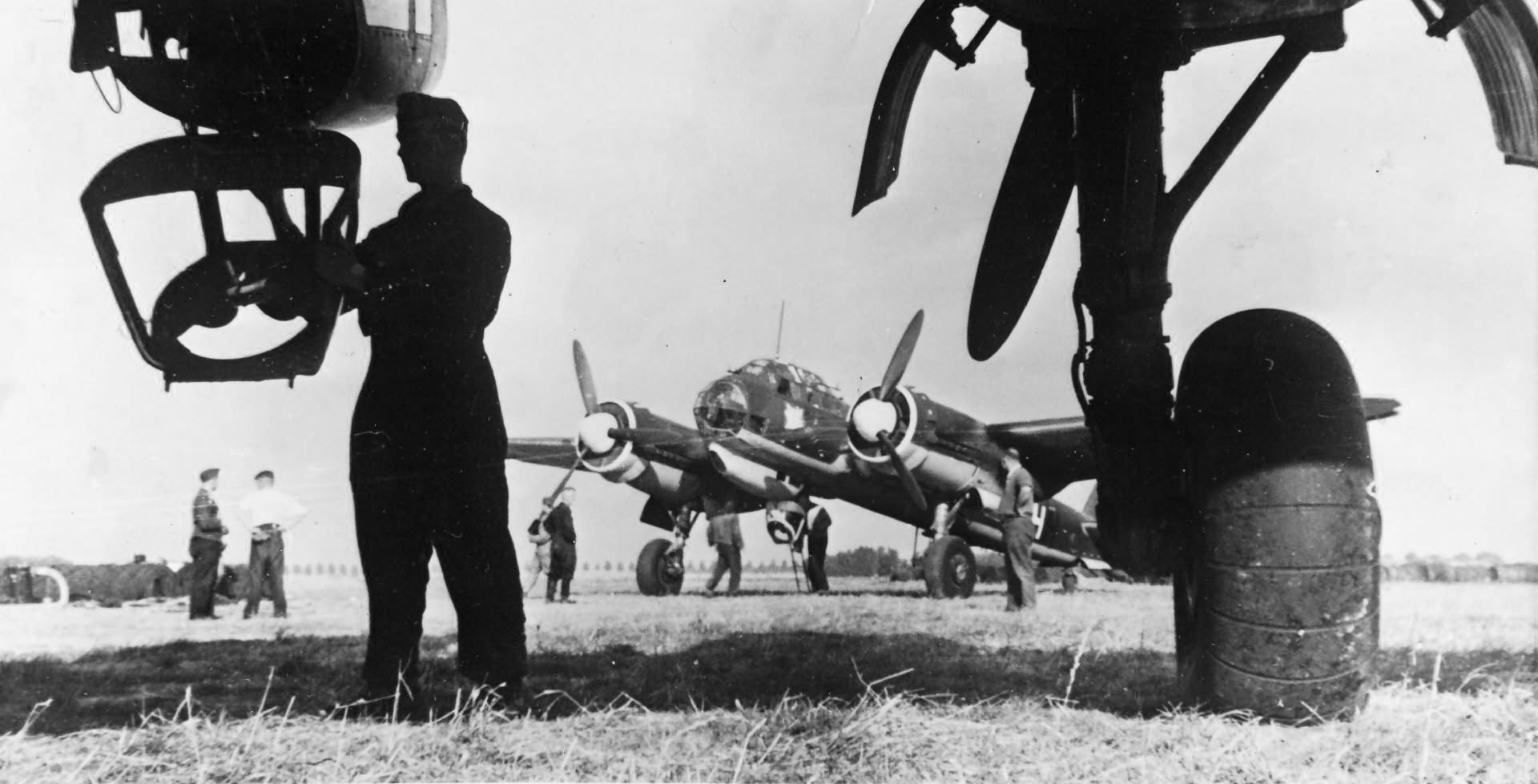The Ju 88’s landing gear was a robust and well-engineered system designed to handle the stresses of both takeoff and landing, as well as the harsh conditions of wartime airfields. Here’s a detailed look at the landing gear assembly:
Landing Gear Configuration
Landing Gear Type: The Ju 88 was equipped with a single-leg landing gear mechanism. This type of gear, manufactured by VDM (Vereinigte Deutsche Metallwerke), featured oleo-pneumatic shock absorption. The oleo-pneumatic system used a combination of oil and compressed air to absorb the impact forces during landing, providing a smoother touchdown and reducing stress on the airframe.
Retraction Mechanism: Upon retraction, the landing gear legs rotated 90 degrees to lay flat within the wheel wells. This space-saving design helped to minimize aerodynamic drag when the gear was stowed during flight.
Wheel Wells and Covers: The wheel wells were covered by a four-piece panel system that sealed the wells when the landing gear was retracted. This streamlined the aircraft’s profile and further reduced drag, enhancing overall performance.
Wheels and Braking System
Wheel Specifications: The wheels used on the Ju 88’s landing gear were sized at 1140×410 mm. These were large enough to provide good ground handling characteristics and to distribute the aircraft’s weight effectively on soft or uneven surfaces.
Rims: The wheels were equipped with VDM rims, which were designed for durability and compatibility with the aircraft’s braking and landing systems.
Braking System: The Ju 88’s wheels featured double drum brakes. These brakes were hydraulically operated and had their own independent hydraulic system. The dual-drum configuration provided increased braking power, essential for safely decelerating the aircraft during landing, especially on shorter runways or under heavy load conditions.
Tread and Stability
- Landing Gear Tread: The tread, or the distance between the wheels, was 5770 mm. This wide tread provided the Ju 88 with greater stability on the ground, reducing the risk of tipping during taxiing, takeoff, and landing, especially in crosswind conditions.
